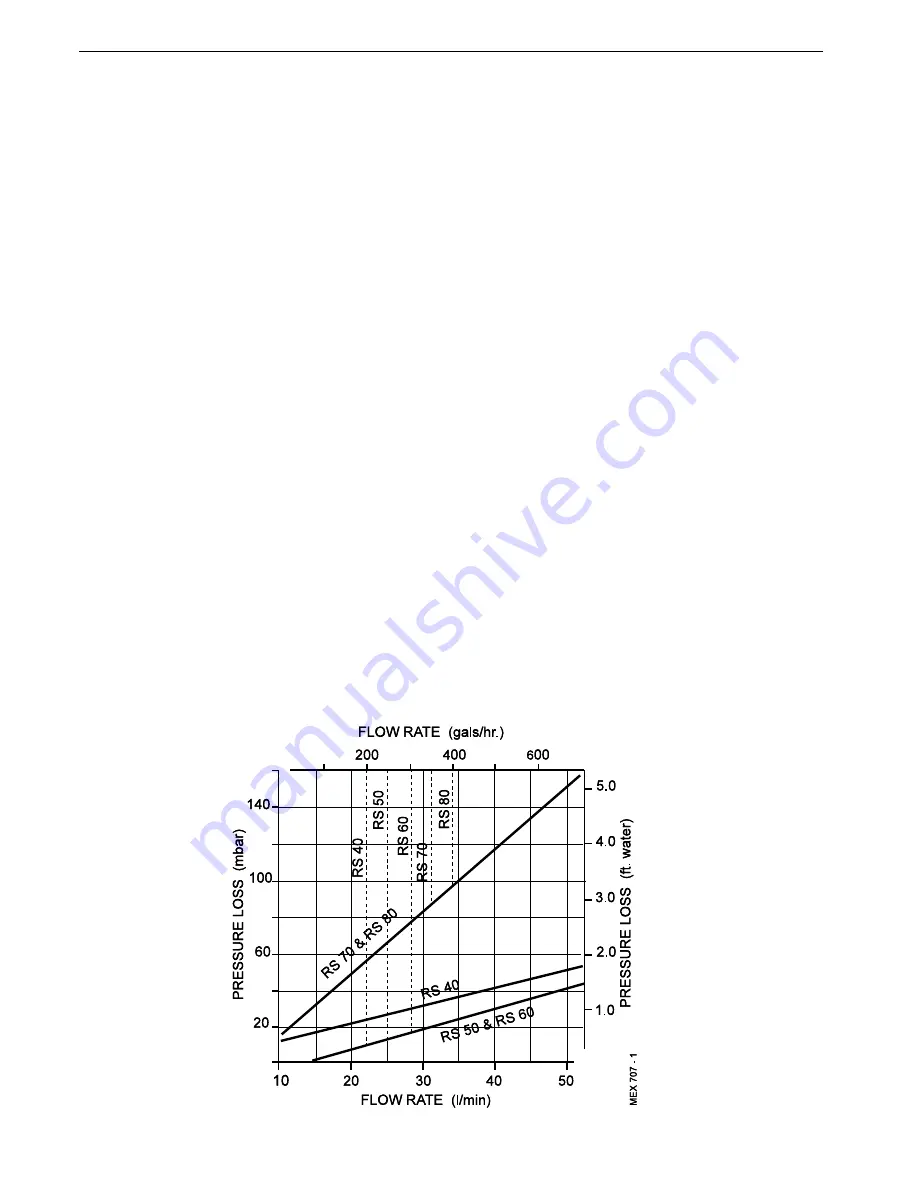
8
Mexico Super RS 3/40 - 3/80 -
Installation
GENERAL
Water Flow Rate and Pressure Loss
THERMOSTATIC RADIATOR VALVES
Caradon Plumbing Limited
recommend that heating systems
utilising full thermostatic radiator valve control of temperature in
individual rooms should also be fitted with a room thermostat
controlling the temperature in a space served by radiators not fitted
with such a valve, as stated in BS. 5449.
When thermostatic radiator valves are used, the space heating
temperature control over a living / dining area or hallway having a
heating requirement of at least 10% of the boiler heat output should
be achieved using a room thermostat, whilst other rooms are
individually controlled by thermostatic radiator valves. However, if
the system employs thermostatic radiator valves on all radiators
or two port valves without end switches then a bypass must be
fitted in order to ensure a flow of water should all the valves be in
the closed position.
ELECTRICAL SUPPLY
WARNING.
The appliance MUST be efficiently earthed.
Wiring external to the appliance MUST be in accordance with the
current I.E.E. (BS 7671) Wiring Regulations and any local
regulations which apply.
The boiler is supplied for 230 V ~ 50 Hz single phase. The fuse
rating is 3A.
Connection must be made in a way that allows complete isolation
of the electrical supply - such as a double pole switch, having a
3mm (
1/8
") contact separation in both poles, or a plug and socket
serving only the boiler and system controls.
The means of isolation must be accessible to the user after
installation.
For bathroom installations the point of connection to the mains
must be situated outside the bathroom.
Dotted lines indicate
flow rates equivalent
to a temperature rise
of 11
O
C (20
O
F)
WATER CIRCULATION SYSTEM
The boiler must NOT be used for direct hot water supply. The boiler
is suitable for connection to pumped open vent central heating
systems, pumped central heating combined with pumped or gravity
indirect domestic hot water supply systems.
The boiler is NOT suitable for gravity heating systems. The hydraulic
resistance of the boilers at
maximum output
with 11
O
C (20
O
F)
temperature differentials are shown in the graph below.
The central heating system should be in accordance with
BS. 6798 and, in addition, for smallbore and microbore systems,
BS. 5449:1.
The domestic hot water system, if applicable, should be in
accordance with the relevant recommendations of BS. 5546.
Copper tubing to BS. 2871:1 is recommended for water carrying
pipework.
The hot water storage cylinder MUST be of the indirect type and
should preferably be manufactured of copper.
Single feed, indirect cylinders are not recommended and MUST
NOT be used on sealed systems.
The hot water cylinder and ancillary pipework not forming part of
the useful heating surface should be lagged to prevent heat loss
and any possible freezing - particularly where pipes run through
roof spaces and ventilated underfloor spaces.
IMPORTANT
The boiler must be vented. If venting cannot be done via a flow
connection a separate vent MUST be fitted by the installer.
Draining taps MUST be located in accessible positions, which
permit the draining of the whole system - including the boiler and
hot water storage vessel. They should be at least
1/2" BSP
nominal
size and be in accordance with BS. 2879.
If required, a drain tap (not supplied) may be fitted to an unused
bottom (1" BSP) tapping on the front of the boiler.









































